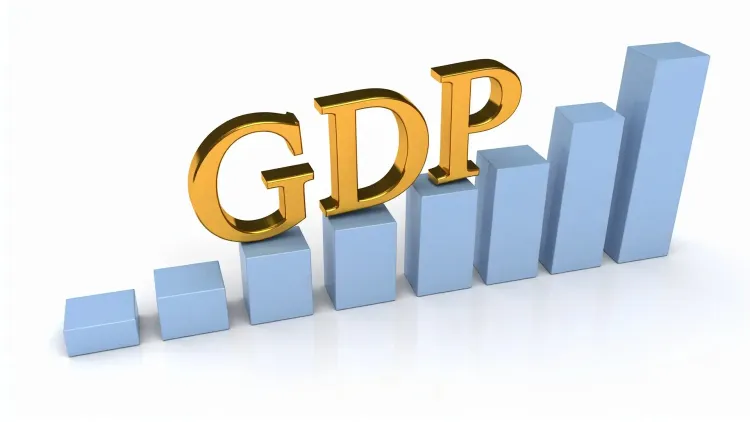Will Strong Q2 Growth and GST Reforms Propel India's Economy to 6.6% This Year?

Synopsis
Key Takeaways
- India's economy expected to grow by 6.6% in FY26.
- Strong Q2 performance and GST reforms are key drivers.
- Growth forecast upgraded from previous estimates.
- Challenges include higher US tariffs and global protectionism.
- India leads among major emerging economies in growth.
New Delhi, Oct 24 (NationPress) The economy of India is anticipated to grow at a robust rate of 6.6 percent this fiscal year (FY26), a slight increase from 6.5 percent in 2024 (FY25). This positive outlook is attributed to significant growth in Q2 and the implementation of GST 2.0 reforms, as reported by the International Monetary Fund (IMF) in its latest regional economic outlook for Asia.
The projection for India has seen an upgrade since April 2025, driven by strong Q2 performance and the beneficial impact of the goods and services tax reform, which is expected to counterbalance the adverse effects stemming from elevated US tariffs on Indian exports.
According to the IMF report, India's growth rate is anticipated to taper slightly to 6.2 percent in 2026.
“The economies within the Asia-Pacific region have shown resilience in 2025, achieving unexpected economic growth during the first half of the year despite facing both external and internal challenges,” stated the IMF. However, it cautioned that rising US tariffs and growing protectionism could dampen demand for exports from Asian nations, impacting growth in the short term.
China's growth is forecasted to decline to 4.8 percent in 2025 from 5.0 percent in 2024.
“India is set to maintain a healthy growth trajectory of 6.6 percent this year, leading among major emerging economies,” the IMF emphasized.
The IMF report also highlighted that the pressures from increased US tariffs and protectionist measures could likely diminish demand for exports from Asia, thereby affecting growth prospects in the near future.
“In light of these challenges, it is essential for policies to prioritize enhancing regional integration by lowering trade and investment barriers, while also fostering productivity through improved financial intermediation and capital allocation. Additional efforts to bolster the services sector, address the implications of an aging population, and refine policy frameworks are vital for sustainable and resilient growth, which will prepare the economy for future shocks,” the report recommended.
Growth in Asia is projected to remain stable in 2025, with a noticeable slowdown anticipated in 2026 due to the accumulating negative impacts of the heightened US tariffs and obstacles to medium-term growth potential.
“In response to higher tariffs and trade policy uncertainties, GDP growth estimates for various Asian countries in 2025 and 2026 are below those released in October 2024, with China and India being notable exceptions,” the IMF report indicated.
The IMF forecasts that Asia's economy will grow by 4.5 percent in 2025, a decrease from 4.6 percent the previous year but an increase of 0.6 percentage points from earlier estimates in April, thanks to strong export performance partly driven by the pre-emptive shipment of goods ahead of increased US tariffs.
Asia is expected to account for approximately 60 percent of global growth in 2025 and 2026. Furthermore, inflation rates in most emerging markets are anticipated to remain subdued in 2025 and approach target levels in 2026, according to the IMF.










